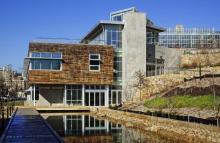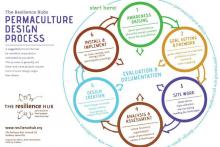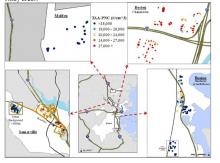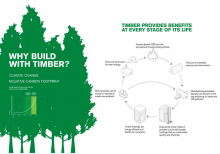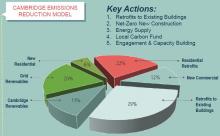Cities, Communities, Place
The Future of Net Zero Energy
Net Zero Energy Buildings have reaching a tipping point. The economic limitations that restricted their success in the past have changed drastically and the technologies needed to achieve Net Zero Energy are now readily available. This session will uncover the strategies and technologies used and the policies and programs in place that are accelerating the uptake of Net Zero Energy Buildings and Communities. This session will also highlight inspiring case studies including project teams’ motivation for pursuing Net Zero Energy Building Certification, how they achieved it and how they maintain performance over time. Brad Liljequist, Technical Director of the Net Zero Energy Program of the Living Building Challenge, will uncover the trends emerging in Net Zero Energy and discuss how each participant can take the lessons learned into their own practice.
Whole Property Retrofit: Redesigning Suburbia for an Uncertain Energy & Food Future
How do we turn the "problem" of suburbia into an enormous opportunity to create a set of resilient systems that can adapt to a changing world? Learn how a holistic design process and a whole-property retrofit in Maine has created a suburban model of living that requires significantly less time, money and energy to run while simultaneously enhancing the thermal comfort and well-being of the residents. This case study presents a transferable suite of findings on efficiency, renewables, integrated landscape elements, food production, transportation and “incremental deep energy retrofitting” which have weaned this eighty-year-old home completely off of fossil fuels.
Highways, Health, and Energy: From City Planning to Air Filtration
This session will be a workshop focused on design and refinement of strategies to reduce the exposure to traffic-related pollution for people who live and attend school in buildings that are near high-traffic roadways. The presenters will provide an introduction to the scientific research around health and pollution exposure, especially relating to Ultra Fine particulate pollution, as well as providing some initial findings around using building siting and air filtration as effective mitigation strategies. Attendees will be asked to help design and refine more effective strategies for keeping people healthy near highways. There are major questions around how best to filter indoor air in residential settings, how to protect students in active outdoor play, and how to use walls and buildings to shield people from the pollution coming from high-traffic roadways.
A How-to Guide to Carbon-Neutral Cities
At NESEA we know how to make really good buildings. But we can only solve so many problems with better buildings. We need to start working just as collaboratively and thoughtfully on making better cities and regions. In this full-day workshop, you’ll have an opportunity to engage with real-world practitioners from three different countries whose home cities have established quantifiable plans for achieving carbon-neutrality within our lifetimes. The goal of this workshop is to provide participants with the framework and tools to go back to their own communities and do the same. We’ll look at support provided by national, regional, and local governments; the role of carrots and sticks; ways to engage the private sector; and the import of public perception, opposition, and support. Participants will have a chance to review the plans each municipality has developed and challenge the planners with the hard questions about dream versus reality.
Building Blocks for Green Master Planning: A Hands-on Introduction to LEED ND
This engaging, hands-on workshop will give participants a “learning by doing” introduction to sustainable site planning principles and USGBC’s LEED for Neighborhood Development program. The workshop will begin with a short introduction. Then, using case studies developed from actual site designs, participants will complete a series of guided exercises in small teams to develop their own plans for these sites using wooden building blocks on top of the case study site plan. Teams will test development feasibility, do site design, and apply LEED ND credits to their plans. By comparing the workshop team designs and considering the actual plans, participants will explore the many ways that sustainable design principles can be applied to site planning. Teams will also gain experience with applying LEED ND prerequisites and credits to their site plans. This workshop is designed for participants of all skill levels—no prior design or planning experience needed
Combating Climate Change with Timber Construction
With its smaller carbon footprint, timber construction should be considered alongside steel and concrete to build both low and mid-rise projects. This session will introduce innovations in timber technology, and through case studies demonstrate the wide range of benefits including environmental benefits. With buildings in the U. S. accounting for 38% of all carbon emissions and with population growth on the rise, we must reconsider how we construct our buildings. Climate change can be combatted in two ways –by reducing carbon emissions and by removing carbon from the atmosphere – and timber is unique in that it is the only building material that can do both. Recent innovations in timber technology is paving the way for timber once again to become integral to the fabric of cities, at this pivotal moment in time.
One City's Energy and Sustainability Vision and Action: Stamford, CT's Energy Improvement District, 2030 District and Pioneering Microgrid and Resilience Project
Stamford is the fastest growing city in Connecticut and has been steadily expanding a series of innovative initiatives at the intersection of economic development, sustainability and resilience. The City was a first mover in creating an Energy Improvement District with the ability to make investments in distributed energy resources and infrastructure city-wide. Stamford’s 2030 District is among a few in the nation promoting green building and clean energy in commercial properties. The City is using an Energy Savings Performance Contract that is developing a microgrid at its Government Center and making resilience enhancements to emergency shelter public schools in addition to energy and water saving upgrades, the first U.S. municipality to apply this self-funding retrofit approach in this way. This panel comprises key actors from the City and its nonprofit and private sector partners who will discuss the work underway and their shared visions and plans for the future.
High-Performance Buildings are Not Enough: An Introduction to High-Performance Cities and the Next Step
In the United States we have historically thought in terms of high-performance buildings: we set our boundary conditions at the lot line. But buildings only work in a context of networks and grids—transportation, energy, water, social, legal. An individual building represents only one small dial to turn to affect our impact on the environment, whereas a city represents a collection of many and much larger dials. In this session, three planners will look at how three forward-looking municipalities—Stockholm, Sweden; Copenhagen, Denmark; and Cambridge MA—are leapfrogging over “high performance buildings” right into “high-performance municipalities” by setting a vision for achieving carbon neutrality within a couple of decades. We’ll look at support provided by national, regional, and local governments; the role of the private sector; and public perception, opposition, and support. We’ll also review the plans each municipality has developed and ask the hard questions about vision versus reality.
The Building Process as Infrastructure
Every building is tied to a series of infrastructure systems through government, wires, cables, energy, and humans. In this session an architect examines the "meta-infrastructure" that buildings nestle into.
Cities: How are Our Neighbors Doing?
Cities play critical roles in achieving our climate goals, and proactive approaches toward energy efficiency and clean energy drive economic development, revitalization, and local job growth. This session will provide a detailed look at the efficiency and clean energy plans in some of NYC’s neighboring cities – Philadelphia, Yonkers, and Albany– and discuss lessons learned from efforts to advance energy solutions. Such participation in city-to-city networks and city-state partnerships are particularly effective ways to unleash innovative solutions.

